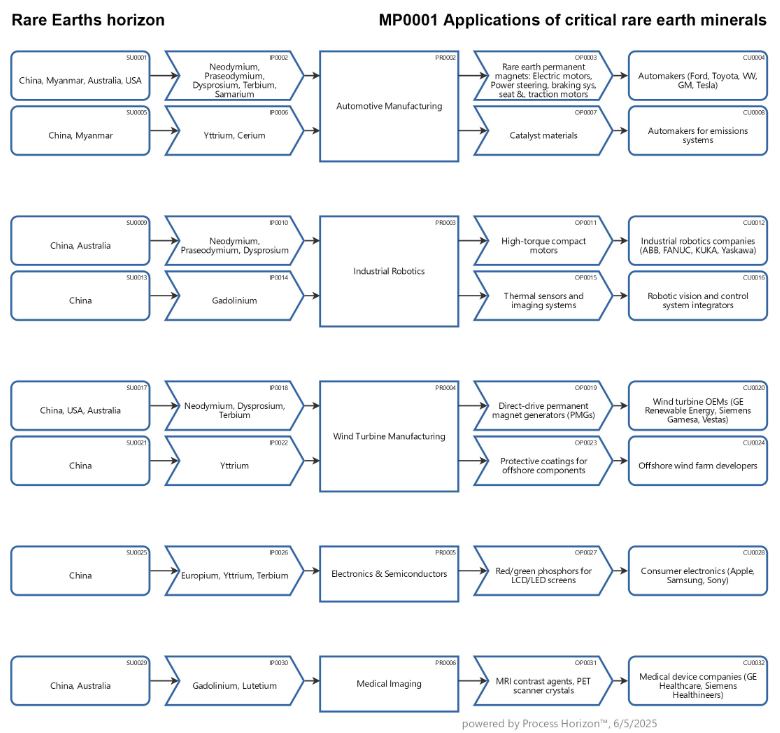Why rare earths matter to modern technologies ?

This SIPOC process map illustrates how rare earths can be sourced by buyers for major tech applications.
Rare earth elements are absolutely vital to cutting-edge technologies because of their unique physical & chemical properties, especially their magnetic, luminescent, and heat-resistant characteristics, which cannot easily be replicated by other materials.
Powerful Permanent Magnets (Key to Miniaturization & Performance)
Rare earth magnets—particularly neodymium-iron-boron (NdFeB) magnets are up to 15x stronger than iron magnets of the same size.
These magnets are essential in electric motors found in:
- Electric vehicles (EVs)
- Wind turbines
- Robotics
- Consumer electronics
- Military systems (e.g. missiles, jet fighters)
High-Temperature Resilience (Crucial for Vehicles & Defense)
Rare earths like dysprosium, terbium, and samarium allow magnets to function reliably under high temperatures, as in:
- EV motors
- Jet engines
- Guided missile systems
Specialty Materials for Electronics & Imaging
- Yttrium: used in lasers and range finders
- Scandium: used in lightweight alloys for aerospace
- Gadolinium: essential for MRI contrast agents
- Lutetium: used in PET scanners and radiation detectors
Will collaborative global trade yield the greatest benefits when all participants adhere to established trade rules ?
Using the following link you can access this sandbox SIPOC model in the ProcessHorizon web app and adapt it to your needs (easy customizing) and export or print the automagically created visual AllinOne SIPOC map as a PDF document or share it with your peers: https://app.processhorizon.com/enterprises/b5YzYce8AZUJqQSsNdGoJvVr/frontend

